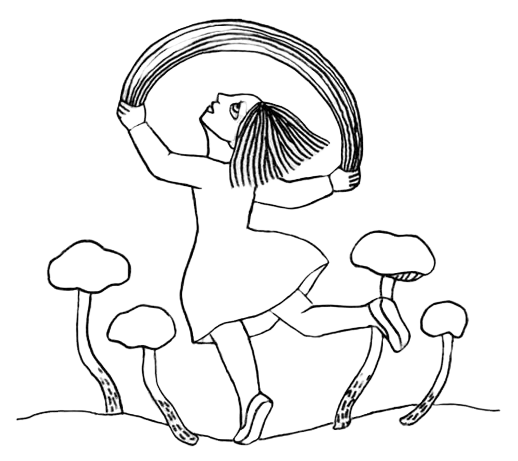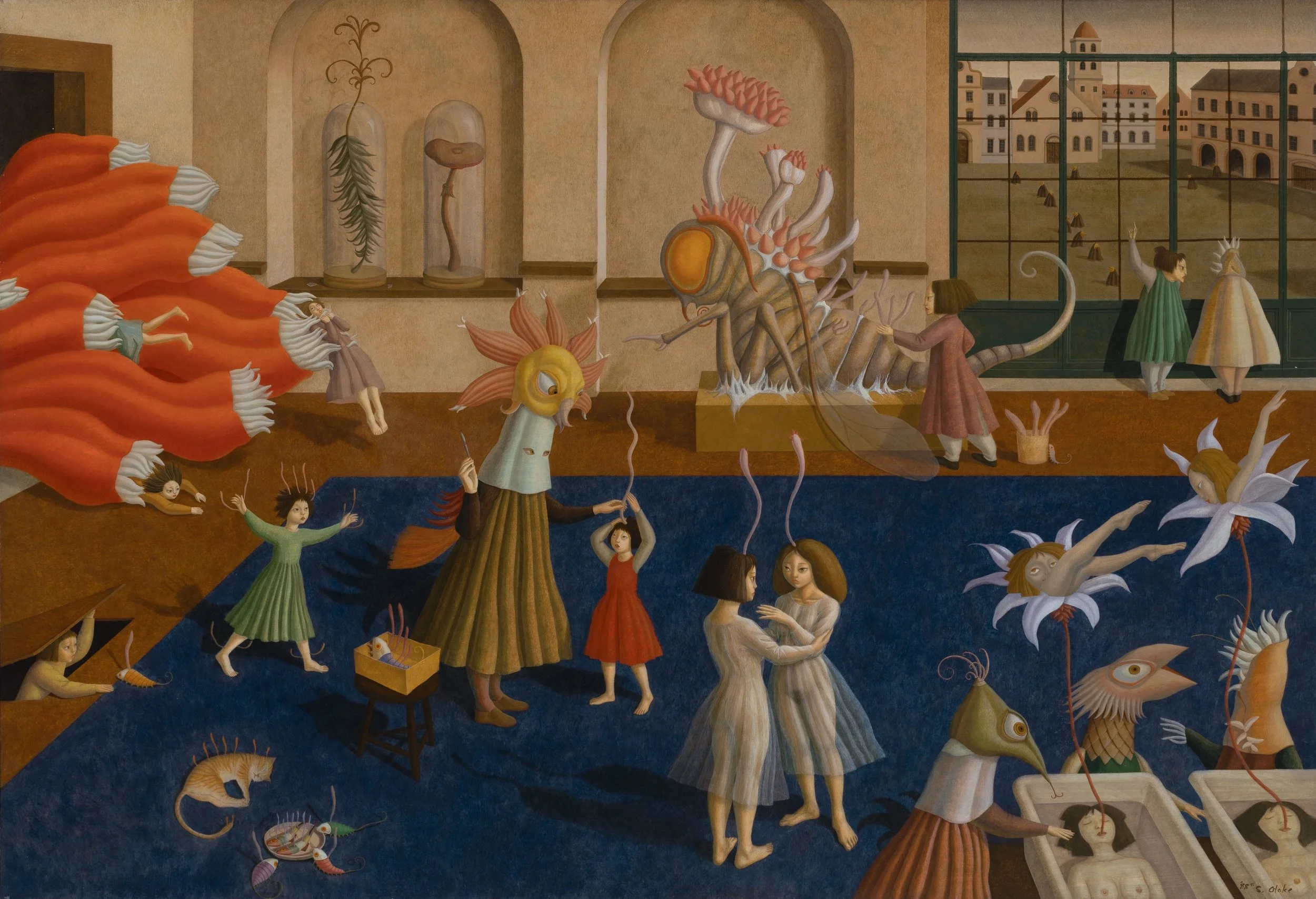The Enchanting World of Shigeo Otake
Mitsugi Uehira (Director, Kyoto City Museum of Art)
1992
The first time I encountered Shigeo Otake's work was during his time at Kyoto City University of Arts. He had just completed a tempera painting, a reproduction of the goddess Flora from Botticelli's Allegory of Spring. The finesse with which he captured her coquettish expression amazed not only me but also the students around us.
During that period, a wave of "Italian fever" had swept through the university, a trend that had been growing for about fifteen years. Many artists, led by Sho Ishimoto in the Japanese painting department, had traveled to Italy to study. Some stayed for extended periods to replicate frescoes in various cities. In the Western painting department, Shuhei Tsuda was immersed in tempera painting research, while Koji Yamazoe, after studying in Spain, also traveled to Italy, driven by his passion to master ancient techniques such as fresco painting. It was around this time that a block wall was constructed in the corner of the old Hiyoshi campus specifically for fresco practice.
This obsession with Italian art and ancient painting methods remained strong throughout the 1970s. Rather than focusing on the grandeur of the High Renaissance, attention shifted toward the artists and works of the Trecento and the 15th century. Shigeo Otake was one of the standout talents to emerge from this environment.
After his graduation, I continued to follow Otake's artistic journey with great anticipation. I was particularly curious to see which classical artists would most strongly influence his passion for ancient art, how he would find points of connection within contemporary art, and how he would carve out a unique path for himself. Gradually, I observed his artistic vision gravitate toward figures such as Paolo Uccello. Unlike the monumental humanism that flourished in the High Renaissance, Otake seemed more drawn to the early, unadorned humanity found in Uccello's works, where he discovered limitless artistic possibilities and a vision for the future.
The Visit, 1982. Tempera and oil on board. 80.3×27.3cm
Otake's work may sometimes remind viewers of artists like Hieronymus Bosch, Arcimboldo, or even Giorgio de Chirico, especially in terms of theme and style. However, for me, the most profound connection lies with Uccello. Uccello, while deeply understanding spatial representation and perspective, also established a fantastical, allegorical style linked to the Gothic tradition. He embraced the refined, decorative sensibilities of the International Gothic style, blending it with courtly elegance a stark contrast to the strict naturalism of the Florentine school. In many ways, Uccello can be considered an anti-naturalistic artist, and in some respects, Otake can be seen as a modern-day successor to this legacy.
Despite Otake's exceptional skill in rendering, he prioritizes color effects over solid composition or sculptural volume. By utilizing contrasts and rhythm in his palette, he brings his figures and backgrounds to life, imbuing his works with a unique vitality. His art does not simply recreate reality; rather, it constructs a fantastical world that transcends time and space. In this world, creatures he refers to as “fungal artifices” insects and reptilian forms-behave like humans, infiltrating our lives and cities, creating a boundless realm of fantasy and mystery. It is as if we are being led into a dreamlike stage play.
A Miscalculation by Mycologist H.A, 1988. Tempera and oil on board. 112×162cm
Within Otake's work, metaphors abound-critiquing the sins and punishments, the indolence and comforts, the ignorance and apathy, the hedonism and excesses of modern society. The satire is sharp, yet it never becomes oppressive. Instead, the narrative pulls viewers into the joyous stories embedded within the artwork, an experience perhaps shaped by Otake's calm and observant gaze that remains ever present behind the scenes.
For this exhibition, I've heard that Otake plans to cover the entire gallery's walls with frescoes created using the strappo technique. Unlike his usual smaller canvases, these large-scale pieces will envelop the viewer entirely, pulling us into his world. Like a carnivorous plant engulfing its prey, I wouldn't mind being “consumed” by his art, immersing myself fully in the enchantment of his fairy-tale realm.
I sincerely hope that Shigeo Otake's art continues to evolve and open new, uncharted territories in the future, bringing us even more surprises and inspiration.


